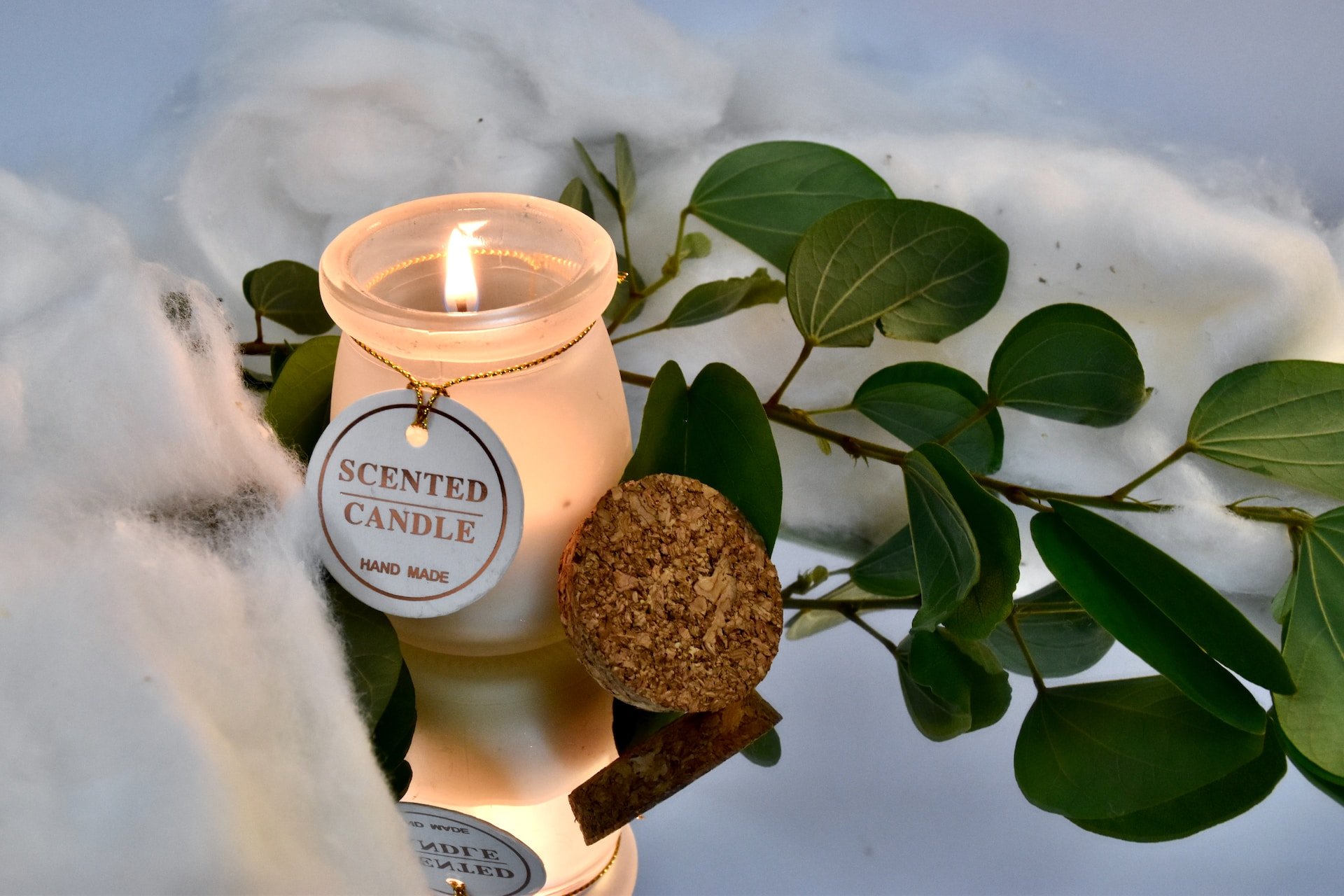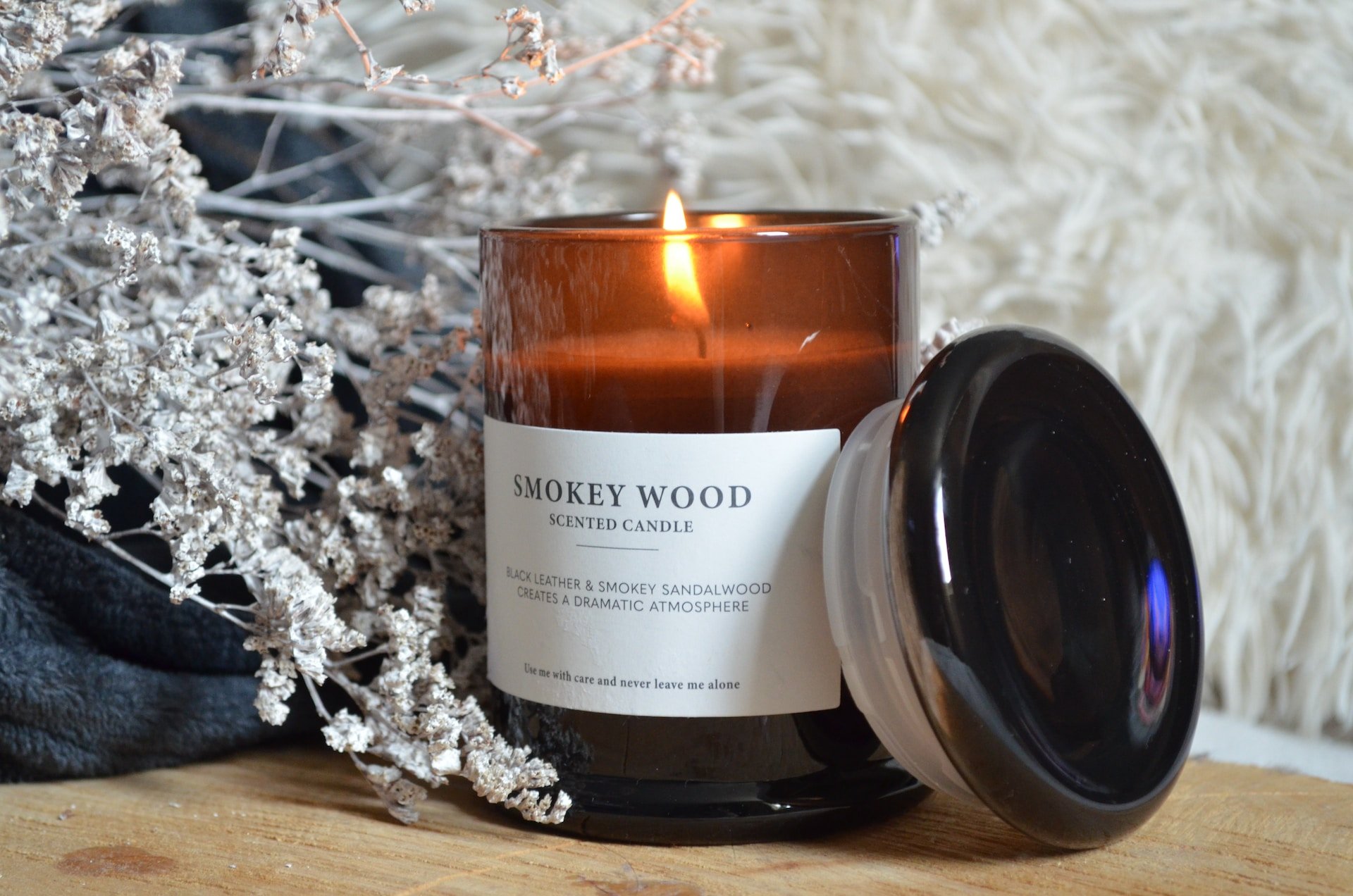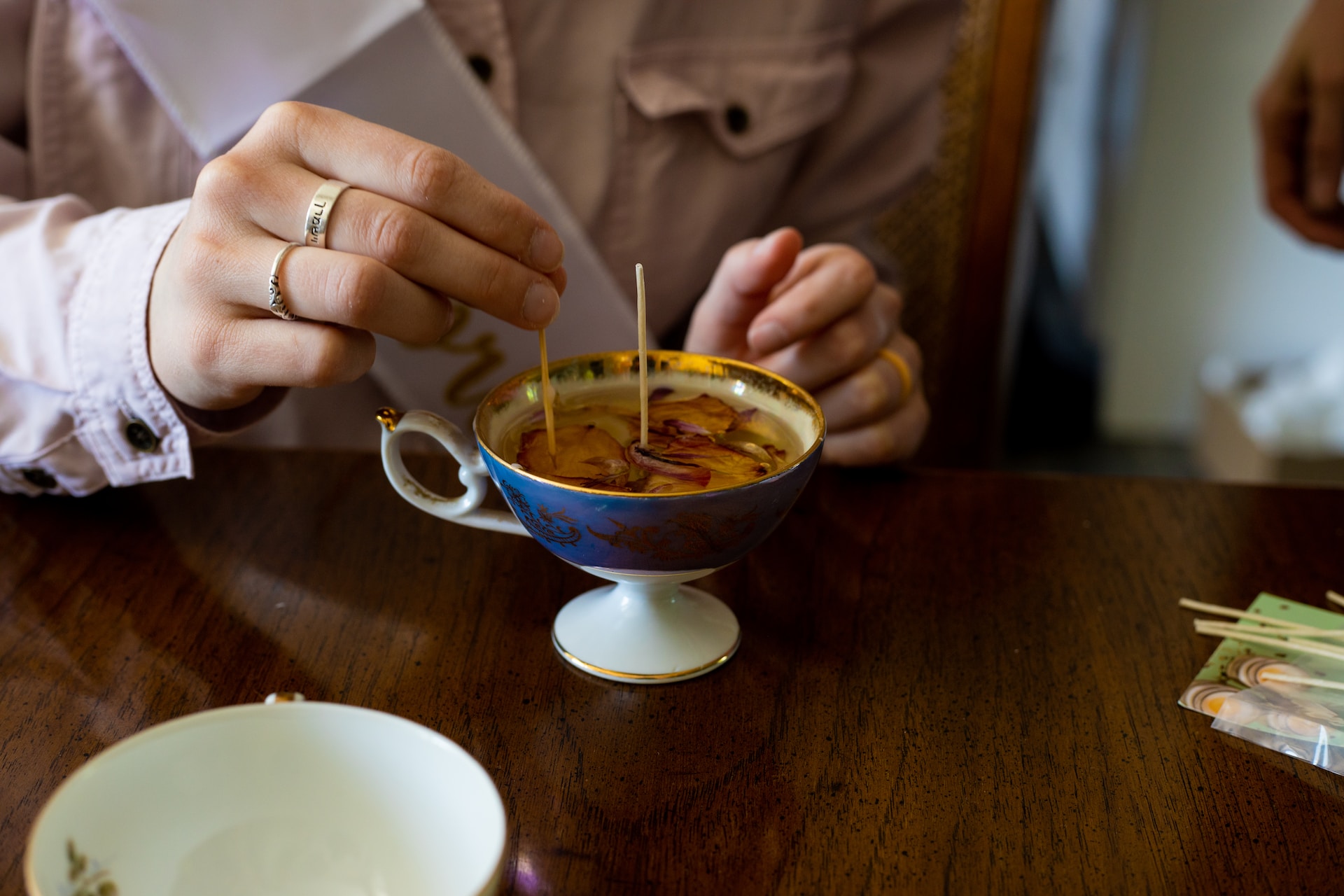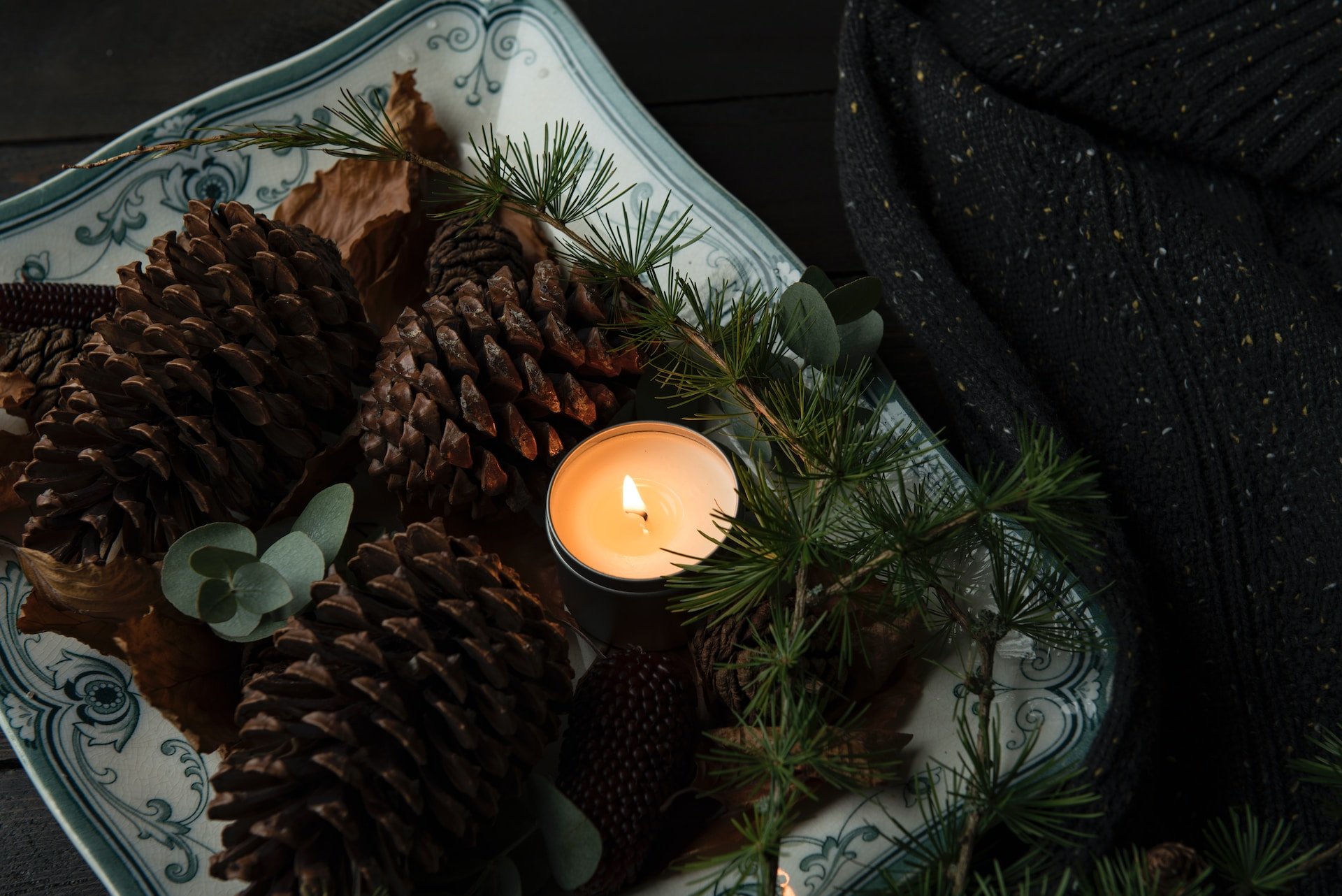Are you tired of the same old candle scents available on the market? Are you looking for a unique and personalized ambiance for your space? Look no further! In this guide, you’ll discover how to make custom candle scents to create a scent that fits your style. Whether you prefer a soothing lavender scent or a zesty citrus blend, custom candles let you create the fragrance to suit your preferences.
The art of candle-making will not only fill your space with delightful aromas but also provide therapeutic benefits. We’ll guide you through crafting your unique candle scents, from selecting the best candle fragrance oils to blending different scents. Roll up your sleeves, gather your supplies, and let’s go on a fragrant journey!
How to Make Custom Candle Scents

Image by Unsplash
Creating custom candle scents is exciting and rewarding since you can tailor the aroma to your tastes. Here’s how to make custom candles, starting with selecting the suitable wax.
Choosing the Right Wax
The type of wax you use affects the quality and performance of your candles. There are several options available, each with its characteristics and advantages. Such as:
- Soy Wax: Soy wax is derived from soybean oil and is known for its clean-burning characteristics. The wax produces minimal soot and burns longer than other waxes. Furthermore, soy wax has an excellent scent throw, making your own candle scents fill the room with a beautiful aroma.
- Beeswax: Beeswax is a natural and eco-friendly choice for candle-making. In addition to having a warm, honey-like scent, it offers a longer burning time. Burning beeswax candles produces a beautiful, golden glow and purifies the air.
- Paraffin Wax: Paraffin wax is popular because it is affordable and versatile. Due to its high scent throw, it is ideal for fragranced candles. However, it is a petroleum-based wax and may produce more soot than soy or beeswax.
Pick the suitable wax for your custom candles based on factors like burn time, scent throw, and eco-friendliness. And you can also reuse candle wax that is leftover after making candles.
Selecting the Perfect Fragrance
After choosing your wax, it’s time to choose the fragrance that will define your candle. Candle-making uses a wide variety of fragrance oils that come in a variety of scents. The following tips will help you choose the right fragrance:
- Personal Preferences: Choose scents that you enjoy and make you feel good. Would you prefer floral, fruity, or woody scents? Consider the atmosphere you want to create before choosing fragrances.
- Fragrance Categories: Most fragrance oils are divided into top, middle, and base notes. Top notes are the initial scents you smell, middle notes provide the fragrance’s body, and base notes provide depth and richness. Understanding these categories can help you create well-balanced and complex your scents.
- Seasonal Scents: When choosing fragrances, remember the season and themes. Citrusy and fresh scents are best for spring and summer, while warm and spicy scents are best for fall and winter.
4 Ways to Use Lavender Oil for Sleep
Blending Different Scents
Creating a custom candle scent often involves blending different fragrance oils to achieve a unique aroma. It can be fun and creative to experiment with different combinations.
Balancing the top, middle, and base notes when blending scents is essential. This layering technique will make your candle’s scent profile more complex and profound. Combine small amounts of each fragrance and adjust the ratios until you achieve a pleasing blend.
Determining the Fragrance Load
The fragrance load refers to the percentage of fragrance oil used relative to the wax. For optimal scent throw, it’s essential to strike the right balance without overpowering the candle.
Generally, a fragrance load of 6-10% is recommended, but check the manufacturer’s specific guidelines. The fragrance load may differ depending on the fragrance, so follow the instructions for your specific scent.
Adding Color
Color can enhance your candles’ aesthetic appeal and enhance their fragrance experience, although optional. You can use candle dyes or color blocks specially designed for candle-making. The best way to get the right shade is to start small and gradually increase the colorant. Remember that certain fragrances may naturally tint the wax, so consider that when adding color.
Preparing the Candle Vessel and Wick
Make sure your candle vessel is clean and dry before pouring the wax. If it is a wooden wick, you need to take note of it too. Make sure your wick size matches the diameter of your container. Proper wick selection is crucial for an even burn and efficient scent release.
A candle with a small wick may tunnel, while a large wick may produce too much soot. By experimenting with different wick sizes, find the perfect fit for your candle vessel.
With these steps, you’ll be well on your way to making your custom candle scents. Keeping track of your recipes and measurements will help you recreate your favorite combinations.
What is Essential to Make Custom Candle Scents

Image by Unsplash
Making custom candle scents requires a few essential elements to ensure success and enjoyment. Here’s a look at the key elements you’ll need to create your candle scents.
- Wax: Wax is the foundation of any candle. Select a wax that suits your preferences and desired candle characteristics. Soy wax, beeswax, and paraffin wax are popular options, each with its qualities. Ensure you have enough wax on hand to accommodate the number of candles you plan to make.
- Fragrance Oils: Fragrance oils are the key to infusing candles with captivating scents. Choose high-quality fragrance oils designed specifically for candle making. For your desired scent, consider fragrance categories such as florals, fruity, and woody. Be sure to choose scents that are skin-safe and designed for candles.
- Candle Containers: Candle containers hold wax and enhance the aesthetic appeal of your candles. Choose heat-resistant containers, such as glass jars or metal tins. Before pouring the wax, make sure the containers are clean and dry.
- Wicks: Wicks are crucial for a proper and efficient burn. Choose wicks that are appropriate for the size and diameter of the candle containers. Metal-based pre-tabbed wicks provide stability during pouring and burning, simplifying the process. Recently, a wooden wick is popular, so it would be good to refer to them.
- Wick Sustainers: Wick sustainers are small metal pieces that keep the wick centered in the candle. They keep the wick from drifting off-center and ensure an even burn.
- Heat-Resistant Utensils: You’ll need heat-resistant utensils to melt the wax and blend fragrance oils, like a double boiler or a melting pot. Don’t use kitchen utensils because they might retain food residue.
- Thermometer: You need a thermometer to monitor the wax’s temperature during melting and pouring. It ensures the wax is at the right temperature for adding fragrance oils and pouring.
- Scale: Accurate measurements are crucial for consistent and well-balanced custom candle scents. Use a scale to weigh the wax, fragrance oils, and any additives you may include in your candles.
- Colorants: You’ll need candle-specific colorants to decorate your candles. They come in liquid dyes, color blocks, and powdered pigments. Try different shades and intensities to get the color you want.
- Labels and Packaging: Adding labels and packaging to your custom candles will complete the look. Design and print labels that identify each scent and provide relevant safety information. Enhance the overall presentation of your candles by using eco-friendly and visually appealing packaging options.
These essential ingredients will ensure a smooth and enjoyable candle-making experience, allowing you to unleash your creativity.
FAQs
How long does it take for the wax to cool and harden?
Larger candles or candles with a high fragrance load may need additional cooling and setting time. If you want to make sure to get the moment your candles are ready, use Alarmy, a versatile alarm clock app. Set Alarmy’s timer feature alerts you when your candles have finished cooling and hardening, helping you manage your time efficiently.
Can I reuse old candle wax for custom candles?
What are some popular candle fragrance options?
- Floral: Floral scents like lavender, rose, jasmine, and gardenia offer a delicate and soothing aroma, suitable for creating a relaxing and romantic ambiance.
- Fruity: Citrus, apple, berry, and tropical fruit fragrances will infuse your space with energy and refreshment.
- Woody: Woody scents such as sandalwood, cedarwood, and patchouli create a cozy and inviting atmosphere with your candles.
- Herbal: Herbal fragrances like eucalyptus, mint, and sage provide a refreshing and invigorating scent, ideal for focus and clarity.
These are just a few examples of best candle fragrance oils options. Craft custom candle scents that suit your style and preferences with countless combinations and unique scents available.
How can I prevent air bubbles from forming in my candles?
- Preheat the container before pouring the wax.
- Ensure the wax is at the proper pouring temperature.
- Pour the melted wax into the container slowly and steadily.
- Use a heat gun or torch to gently warm the candle’s surface after pouring.
- Tap or shake the container to release any trapped air bubbles.
Is it safe to add decorative elements to my custom candles?
- Use fire-resistant or non-combustible materials.
- Position decorations away from the flame’s path.
- Ensure the wick remains accessible.
- Regularly inspect for damage or deterioration.
How do I troubleshoot if my candle burns unevenly?
- Trim the Wick: Ensure the wick is trimmed to about 1/4 inch before lighting the candle. A longer wick can cause uneven burning. If it is a wooden wick, it may be slightly longer than this.
- Check for Drafts: Ensure your candle is placed in a draft-free area. Drafts can disrupt the flame and lead to uneven burning.
- Burn the candle Longer: If only a portion of the candle has melted during previous burns, allow it to burn for a longer duration. It helps the entire top layer of wax to melt and prevents tunneling.
- Rotate the Candle: If you notice uneven burning patterns, gently rotate the candle periodically while it is lit. It promotes more even distribution of heat and wax.
- Use a Candle Snuffer: Instead of blowing out the candle, use a candle snuffer to extinguish the flame. Blowing can cause the wick to shift or create uneven melting.
The Takeaway

Image by Unsplash
You can infuse your living space with captivating aromas tailored to your preferences by creating custom candle scents. Throughout this guide, we’ve explored the step-by-step process of making custom candles, from choosing the suitable wax to troubleshooting common problems. With these techniques and tips, you can make candles that emit delightful scents and reflect your style.



